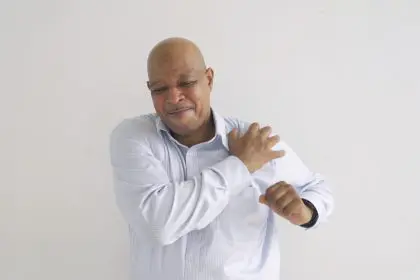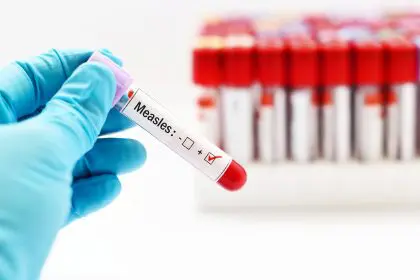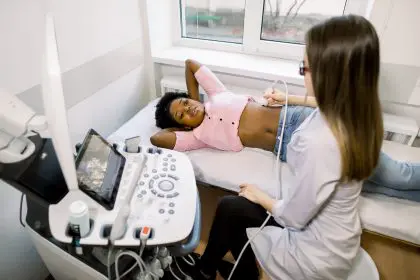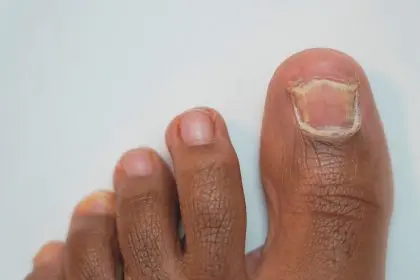Recent research highlights a troubling pattern in healthcare: Black men are disproportionately affected by hypertension, diabetes, and HIV/AIDS, yet are significantly less likely to seek medical care for these conditions compared to other demographic groups. A comprehensive study conducted by researchers reveals how these disparities manifest across the healthcare journey and identifies the complex social factors behind this reluctance to engage with medical services.
The triple threat to Black men’s health
Hypertension
Hypertension, commonly known as high blood pressure, affects Black men at higher rates than almost any other demographic group in America. The condition often develops without noticeable symptoms, earning its reputation as a “silent killer.” According to the study, Black men develop hypertension earlier in life and experience more severe complications than their counterparts from other racial backgrounds.
The research indicates that Black men are 40% less likely to have their hypertension diagnosed and properly treated compared to other groups. This gap in care leads to higher rates of heart disease, stroke, and kidney failure—all preventable outcomes with proper medical intervention. Cultural factors, including traditional masculine norms that equate seeking help with weakness, contribute significantly to this reluctance to pursue regular blood pressure screenings.
Social determinants of health, including lower access to fresh foods in many predominantly Black neighborhoods and higher levels of environmental stressors, further compound the problem, making hypertension management particularly challenging for Black men.
Diabetes
Diabetes represents the second major health threat that Black men are less likely to address through medical care. The research reveals that Black men have a 60% higher risk of developing type 2 diabetes compared to white men, yet are among the least likely to receive regular screening and ongoing treatment for the condition.
The study identified significant disparities in diabetes care across 39 countries, with particularly troubling trends in the United States. Black men frequently enter the healthcare system only after developing serious complications from uncontrolled diabetes, including vision problems, kidney disease, and neuropathy.
Historical factors play a crucial role in this healthcare avoidance. Generations of discriminatory treatment within medical systems have fostered deep-seated mistrust among many Black men. The research highlights how past medical abuses continue to cast long shadows over healthcare relationships today, making many Black men hesitant to engage with medical professionals until situations become dire.
HIV and AIDS
The third critical condition identified in the research is HIV/AIDS, where Black men face both elevated infection rates and reduced access to life-saving treatments. The study found disparities in HIV care across 76 countries, with Black men consistently less likely to receive regular testing, early diagnosis, and continuous treatment.
Social stigma surrounding HIV remains particularly powerful within some Black communities, where discussions about sexual health may be considered taboo. This cultural silence creates barriers to prevention education and discourages testing. The research shows that Black men are more likely to receive HIV diagnoses at advanced stages, significantly reducing treatment effectiveness and increasing mortality rates.
Additionally, structural barriers, including limited clinic hours that conflict with work schedules and transportation challenges to medical facilities, present practical obstacles that disproportionately affect Black men seeking HIV care.
Barriers to healthcare engagement
The research identified several systemic barriers that prevent Black men from seeking healthcare for these three conditions. Limited access to healthcare facilities in predominantly Black neighborhoods creates geographical obstacles, while inflexible work schedules without paid sick leave make attending medical appointments financially punishing for many.
Insurance coverage represents another critical barrier. The study found that Black men are more likely to be uninsured or underinsured than other demographic groups, making preventive care financially out of reach. Even when insurance is available, high deductibles and copays can discourage regular check-ups and medication adherence.
Beyond the practical obstacles, the research revealed significant psychological and social barriers that discourage Black men from seeking care. Traditional masculine ideals that emphasize self-reliance and strength can make acknowledging health vulnerabilities particularly challenging. The study found that these norms were especially influential in delaying care for conditions like hypertension and diabetes, which may not produce immediate, dramatic symptoms.
Historical trauma within the healthcare system continues to impact trust levels among Black men. The research highlights how generations of discriminatory treatment have fostered wariness of medical institutions, with many Black men reporting concerns about receiving lower-quality care or having their symptoms dismissed by healthcare providers.
The research also examined how cultural factors influence health behaviors that increase disease risk. While males across all demographics were found more likely to smoke, increasing hypertension and diabetes risk, the study noted cultural factors specific to Black communities that influenced health decisions.
Food traditions, which may include dishes high in sodium and fat content, can contribute to both hypertension and diabetes risk when combined with limited access to affordable fresh alternatives in many predominantly Black neighborhoods. Similarly, the study identified how cultural norms around discussing sexual health impact HIV prevention and treatment seeking behaviors.
Possible solutions
The researchers emphasize the urgent need for targeted public health strategies to address these disparities. Their findings suggest that effective interventions must operate at multiple levels, addressing both individual behaviors and systemic barriers.
Community-based programs located in barbershops, churches, and other trusted community spaces have shown promise in reaching Black men who might otherwise avoid traditional healthcare settings. These initiatives offer health screenings, education, and connections to culturally competent care providers who understand the unique challenges facing Black men.
The study also highlights the importance of healthcare provider education about implicit bias and culturally responsive care. Training medical professionals to recognize and address their own potential biases can help rebuild trust and improve the quality of care Black men receive when they do engage with the healthcare system.
Policy interventions, including expanded insurance coverage, more flexible clinic hours, and increased funding for community health centers in underserved areas, are identified as structural changes necessary to improve healthcare access for Black men.
The path forward
The research team concludes that addressing these disparities requires sex-disaggregated and race-disaggregated data collection to better track who is falling through the cracks in prevention, diagnosis, and care systems.
The researchers emphasize that without comprehensive data that examines both sex and racial differences, healthcare providers cannot effectively identify who is missing out on crucial prevention, diagnosis, and care services.
The study calls for a gender and culturally sensitive approach to healthcare that acknowledges the unique challenges Black men face when navigating health systems. By understanding and addressing the specific factors that discourage Black men from seeking care for hypertension, diabetes, and HIV/AIDS, public health professionals can develop more effective strategies to close these dangerous gaps in care.
Addressing these disparities represents not just a medical necessity but a matter of health justice, requiring coordinated efforts from healthcare providers, community leaders, and policy makers to ensure Black men receive the care they need for these three deadly but manageable conditions.















